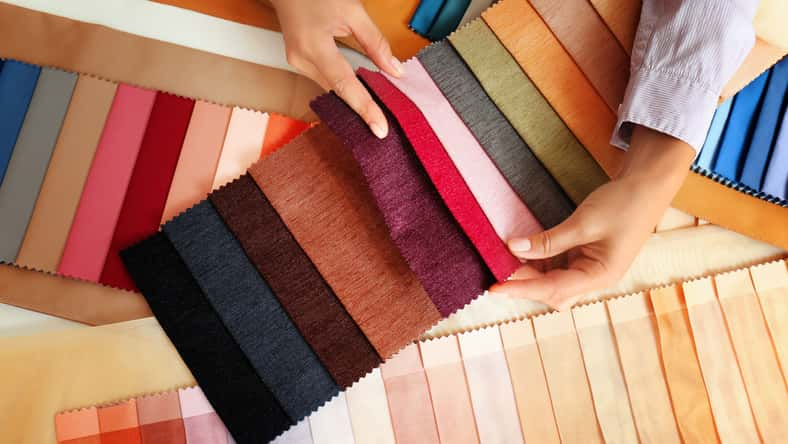Scientists Have Created A Chalk-Based Coating For Fabric That’s Flexible, Durable, And Will Keep You Cool By Reflecting The Sun’s Energy Back Into The Atmosphere

When spending time outside in the summer, it’s important to find ways to stay cool, particularly for those who have to work in the heat. There are certain textiles that can help with that.
You’ve probably seen shirts for sale that can reflect the sun’s rays or transfer heat away from the body. However, these often require rigid structures and complex manufacturing processes, making them expensive and uncomfortable to wear.
Now, researchers have created a flexible and durable chalk-based coating to treat fabric with. It helps cool the air underneath the fabric by up to eight degrees Fahrenheit. And best of all, it is made sustainably! The team presented their results at a meeting with the American Chemical Society.
Over the years, scientists have been working on developing textiles that can deflect the sun’s rays and push out natural body heat at the same time. This process is called radiative cooling.
To create light-reflective textiles, materials such as titanium dioxide, aluminum oxide, organic polymers, and PFAs, also known as forever chemicals, are embedded into fibers.
These materials are harsh on the environment, especially when produced on a large scale. So, that led the research team from the University of Massachusetts, Amherst, to see if they could develop a natural, environmentally friendly textile coating with the same functions.
The team was inspired by traditional limestone-based plasters used to keep houses cool in hot, sunny climates. They came up with a process that involved coating fabric tiles with small particles of calcium carbonate, the main component in limestone and chalk.
The coating was able to reflect the sun’s energy back into the atmosphere and allow natural body heat to escape. It can be applied to almost every commercially available fabric, and it can even go through the washing machine without being affected.
“We start with your cotton T-shirt…and we just apply this coating on either one or both faces of the fabric,” said Trisha L. Andrew, a chemist and materials scientist at UMass. “The coating is entirely surface level. It does not penetrate or change the cotton fibers.”

Africa Studio – stock.adobe.com – illustrative purposes only, not the actual person
On a sunny day, the researchers tested the cooling abilities of treated and untreated fabrics outside when the temperature was more than 90 degrees Fahrenheit.
They discovered that the air temperatures underneath the treated fabric were eight degrees cooler than the outdoor temperature in the middle of the afternoon.
The difference in temperature between the treated and untreated fabrics was even greater, reaching a maximum of 15 degrees. The innovation is a valuable resource for those struggling to tolerate the heat.
As humans continue to burn fossil fuels and heat up the planet, the temperatures will only climb higher. Heat is actually the deadliest type of extreme weather.
It causes heat exhaustion and even heat stroke, which is when the body loses the ability to cool itself down. Heat stroke has the potential to be fatal.
So, hopefully, more affordable and sustainable options for cooling fabrics such as this one will be available for public use in the near future.
Sign up for Chip Chick’s newsletter and get stories like this delivered to your inbox.
More About:News





